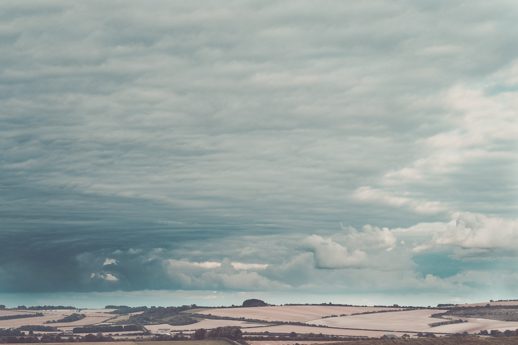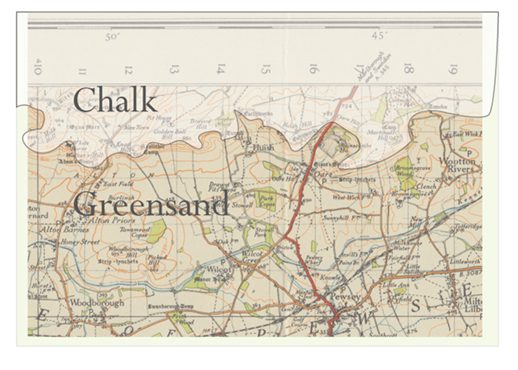
Words and pictures: Malcolm Anderson
I suppose the truth is, there is no spoon. Here in the valley, sandwiched as I am between the walls of chalk to the north and south, I have had to face up to facts. Facts that I knew from my research, although I had always held a naïve romantic notion that I would somehow miraculously discover some hitherto undiscovered truth.
In The History of Modern Wiltshire, Written by the Rev. John Offer and Sir Richard Colt Hoare and published in 1825, the source of the River Avon is described thus:
“This Avon is formed of two chief branches: one branch originates in three sources; one of these is on the South side of Bishops Cannings, another South of Stanton, a third between Woodborough and Beeching Stoke. The other chief branch originates from two sources, one of them is derived from two small streams which unite near Pewsey, and flowing by the Manningfords and North Newton, joins the chief branch near Up-Avon. The other source of this branch rises between Alton Priors and Alton Barnes, and leaving Woodborough on the East, joins the preceding at North Newton.”
While resting outside the church of St John the Baptist in Chirton, Brian Vesey-Fitzgerald gets talking to, as he describes him, ‘an ancient’ about the river. The man, having lived in that part of Wiltshire for all of his 70 plus years, was quite clear that neither of the main spurs that split from Scales Bridge are named the Avon, the Patney arm is the Marden Brook, and the Pewsey Arm the Deane Brook. Apparently it was obvious, one of those facts that just was, without a need to be questioned:
“Thic Avon dussent rise nowhere in a manner o’ speaking.”
On the 1940 OS map pretty much any blue line upstream of Scales Bridge, with the exception of Etchilhampton Water, is simply labeled as the Avon, which provides a neat if unsatisfactory solution.

So this thin marshy strip in front of me, this deep-green reedy smudge on an otherwise mundane monocultural grass field is in reality as good as it’s going to get.
Not the source perhaps, but a source nonetheless.
There is no clear pool to cup my hands in and drink deep from, only a slight wetness underfoot. I do the only mature thing I can and jump up and down on the springy, squelchy trampoline as if no-one is watching, and make satisfyingly wet farty noises with my shoes as I land. The murky soil-heavy water oozes around my shoes and the air sharpens with the anaerobic smell of locked away silt being disturbed.
Across the field the smudge thickens and takes on a more corporeal form and towards the fence line the blurry sedge and grass line begins to give way to scrubby young trees. Under the barbed wire, in the dark hidden spaces beneath thorn, bramble and ash I can, if I stare intently, see a glimmer of reflected light. The first sign of open water on the surface, the first sign of the river the smudge will become. It’s impossible to capture the glimmer on camera, much to my chagrin, but here it is. A piscatorial promise of the future, a flickering ultrasound of a myriad of lives yet to be lived. By lying on the cool damp grass and sticking my head into the brambles I can hear the first sound of a river breathing, half-imagined like a wind chime in a garden five doors down. An ice cream van miles away with the wind blowing in just the right direction.
The audible breaths of the river whisper and inveigle, forming softly murmured words, which hang smoke-like around my ears like the touch of a lovers tongue; tickling my consciousness with their fey promise. Beguiled I sit, still as the earth beneath me, listening to the sounds of river-words as they chatter into the wind.
Although the River Avon is thousands of miles from the Montana waters immortalized by Norman Maclean in A River Runs Through It, I know that these words and the words he heard are the same.
“The river was cut by the world’s great flood and runs over rocks from the basement of time. On some of the rocks are timeless raindrops. Under the rocks are the words, and some of the words are theirs.”
To Maclean they were the words of god. To me they are words of a never-ending cycle of evapotranspiration and rainfall, of the turning of the earth. Words of hope, of love and loss. Of time, geography and geology. Soil, stone, song and poem.
Up here at the beginning of the river, far from the sea, the words don’t form sentences, just strings of random disconnected vocabulary, bubbling from inside the dark gaps, brought to life by sparkling reflections. These words are still to be shaped into sentences, paragraphs and stories as they experience their journey to the sea. Yet jumbled, they are urgent, ancient, unending and for all their whimsy they carry the solidity and weight of the world. Perhaps Maclean’s Presbyterian beliefs and my freethinking atheism aren’t as far apart as I’ve always believed.

Across the flat grassy land to the East and West of me there are dozens, if not hundreds of these marshy smudges, each with their own glimmers and murmurs. The almost-silent words are there for all of us who are prepared to lie still and listen, to let the rhythms of the world form.
With wet knees and a full heart I head back towards the tarmac and walk along rosebay willowherb fringed lanes, as close as I can to the imagined route of the fledgling waterway, downstream towards Pewsey.
Malcolm Anderson on Caught by the River/on Twitter